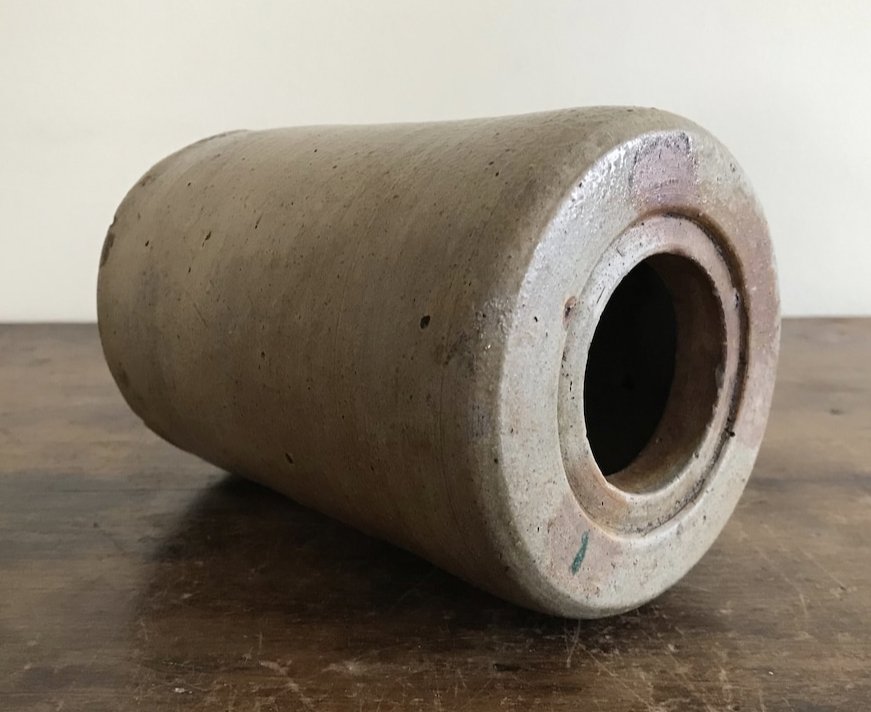
Oyster Jars are specialized ceramic vessels developed in colonial America to ship pickled oysters...
These single-serving-size jars ranging from a pint and a half to a quart capacity were typically made of salt-glazed stoneware, and less commonly lead-glazed earthenware. Evidence points to the fact that this form likely developed in New York after 1720 with the arrival of German stoneware potters, and that sometime after 1800, spread to other centers of oyster production along the Atlantic coast including Boston, Philadelphia, Alexandria and Baltimore as shipping from these areas increased.
The earliest jars were very simple, straight-sided, cylindrical vessels, characterized by unusually small openings relative to their size. These openings were often surrounded by a distinctive recessed gallery, or less commonly a slightly raised area with a very shallow groove. While the characteristics of the gallery vary significantly depending on age and maker, oyster jars differ from the later (1850-1900) “wax sealers”, which have much larger openings and a well-defined and deep recessed groove ringing the top to receive a metal lid.
In about 1825 a new and improved type of jar was developed, probably in Norwalk, CT, for the New York market. These jars differ from the earlier type in that they are characterized by a pronounced raised collar surrounding the opening that was more suited to hold the cork which would better protect the perishable contents.
While metal containers came to dominate the market in the later half of the 19th century and into the 20th, a wide-mouthed and handled stoneware jar came to be used in New England during the same period. I have chosen not to cover the latter on this webpage.











